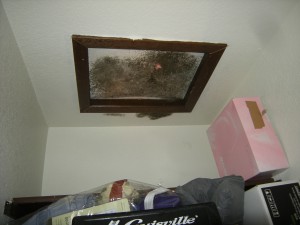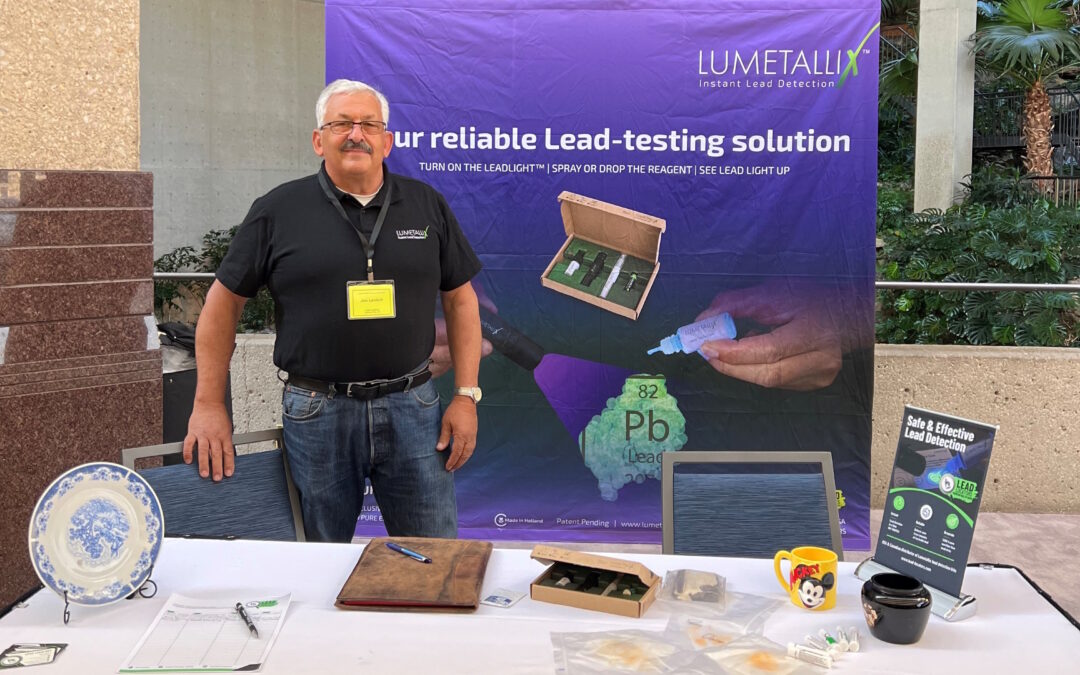I was recently asked to investigate a serious situation involving “MOLD,” which I like to call “Fungal growth,” on the inside of an apartment. When I got there I was initially stunned to see how serious the situation was. I took all sorts of images and readings with my meters and was able to identify what was happening and why.
I understood the biology and the physics of water almost intuitively, but the residents, 3 college aged folks, were clueless.
It took this to frighten them enough to call for help.
I once heard that if you can’t explain a complicated thing so that anyone can understand it, odds are that you don’t understand it very well either. So here is my best shot.
Levco explains moisture problems
Explaining the reality of what was going on was a challenge. Seeing that glazed college-student look, made me want to tune up my story, I figured that this forum would be a good place to share my findings.
The Players
- Temperature, both indo0r, but mainly outdoors in this case, are important
- Humidity, or “Relative Humidity,” which is represented in a percentage and expresses the amount of moisture the air can hold at any given temperature.
- Dew Point, the temperature at which the air can no longer hold moisture.
- Condensation, moisture that comes out of the air and forms droplets on the colder surface.
- Fungus, also called MOLD is a naturally occurring matter that speeds the process of decomposing organic material.

Water on the windows
Here is a snapshot of what I saw.
- Moisture on the inside of the windows. There was so much it had filled the window trough.
- Moisture dripping off of the Air conditioning unit (A through the wall unit)
- Areas of fungal growth on the attic access.
- There were small splotches of fungal growth on the ceilings just at the edge of the outside walls.
My investigation involved getting a good history, taking in subjective information, and then doing an objective testing with my environmental testing equipment. The report I produced put it all together with a bow.
Here is a list of my recommendations:
- Run the exhaust fan in the bathroom and the kitchen to get some air exchanges.
- Crack a window to allow some of the dry outside air into the home
- Buy and operate a dehumidifier that can keep up with the demands of the situation
- Keep some form of fan running to get some air circulation in the home
- Hold the shades up a bit at the bottom to dry out the window sills
- Actively monitor the indoor conditions and shoot for no condensation on the windows as a goal.
- Add additional insulation to keep hot and cold surfaces from coming close to each other and forming condensation.
How condensation works

FLIR image of cold wall
Air is made up of several elements Nitrogen, Oxygen and small components of other gasses, along with moisture. The warmer the air, the more moisture it can hold.
Once confused with moisture coming through glass, the science of condensation is now understood and it has to do with the many unique and amazing properties of water. Water can change from a gas to a solid then to a liquid and it can do it by skipping steps, but that is beyond what we need to know at the moment.
When moisture laden air meets a cold surface (below the Dew Point temperature) it “condenses,” leaving droplets of moisture on things. You can test this theory with a beer, Pour a cold beer into a glass in a warm, moist room and you will get moisture in the form of condensation on the glass. It comes from the room air that you are in, not from inside of the glass. The glass is merely providing the cold surface on which the condensation accumulates. It happens every time, and that is why they give you that absorbing disk under your beer glass called a coaster.
This is the same principal that makes air conditioners pull moisture out of the air. The cold plates that create cold air also create a condensation surface and draw the moisture out of the air.
In this case, we had very high humidity in the room from fish tanks, showers being taken, and multiple people living in this apartment. We like to have our homes around 70 degrees and we also had an unusually cold winter with prolonged single digit temperatures.
Anything cold like the windows, the attic hatch without insulation, the through the wall AC unit, or the ceilings where the soffit vents are close to the ceilings, make sure that the moisture laden air is condensing. The bottom line is the colder the outside temperature, the less humidity you can have in your home before condensation will occur.
Fungal growth needs only 2 things to flourish.
- Moisture this can be from a leak or condensation or just ground water.
- A food source.

Boise
That being said, we first need to get to the bottom of the problem, The easiest and most cost effective solution is to eliminating the moisture from the equation. By breaking the cycle and eliminate the moisture leg, we can solve the dilemma.
Mold clean up can be as simple as a wash up with a mild detergent solution when we first see it appearing. Dry out the area completely. If it is scary, have a professional get after it. In some situations, air sampling can be done to capture mold spores for rapid identification if necessary. We do offer that service, however it is often just confirmation of what we already know. We also offer post remediation verification if that is required.
In Conclusion:
We live in a fairly dry arid climate on the edge of a desert, so we do not have very humid air outside. 28% indoor humidity in our area is a good year round number to shoot for, as we feel fairly comfortable there and do not get dry flaky or cracked skin.
Watching your windows and/or (other cold surfaces) along with monitoring your relative humidity is the “poor man’s” gauge and will instantly tell you what you need to know.
Mold and fungal growth can cause negative health effects and folks are often allergic to the spores. It will often produce a nasty, musty odor and in extremely rare cases can make you very sick. “Toxic Mold” has been hyped in the media and can usually be handled successfully with common sense, good investigative work, and a little elbow grease.
I also just discovered that there is a national standard manual for the industry that is the bible for professional mold mitigation contractors.
Follow UP
I pulled out two gallons in 24 hours with my dehumidifier, and it felt pretty good in there. Let’s hope the residents comes up with a long term solution to this situation for the sake of the building.
Your comments are welcome. To ask questions or get more information about remodeling, click here to email me directly, or call 208-947-7261







0 Comments